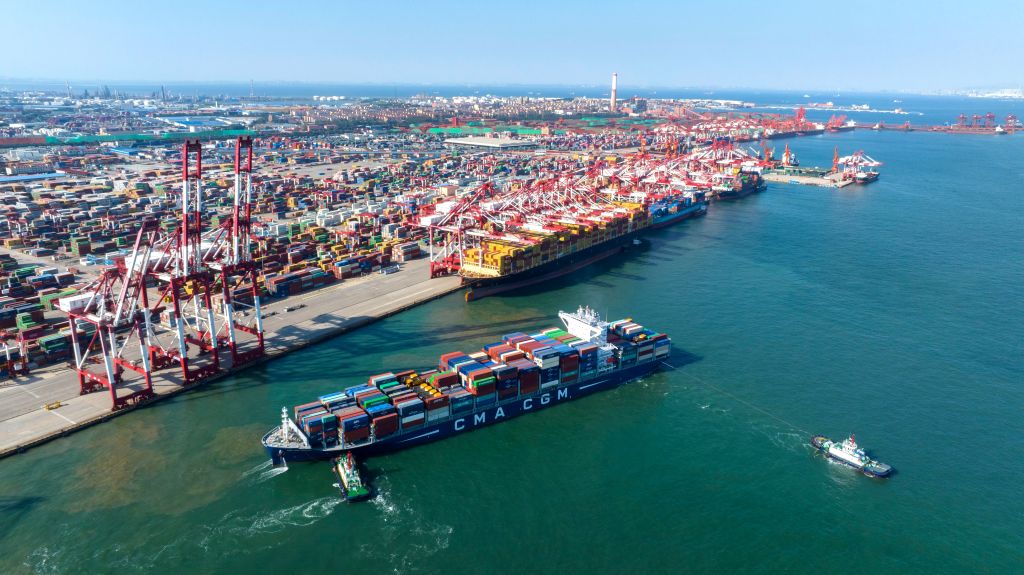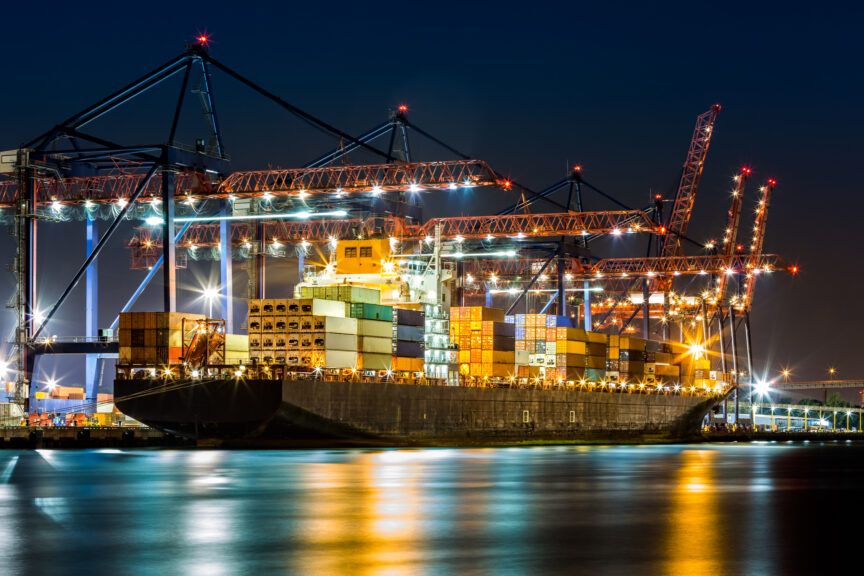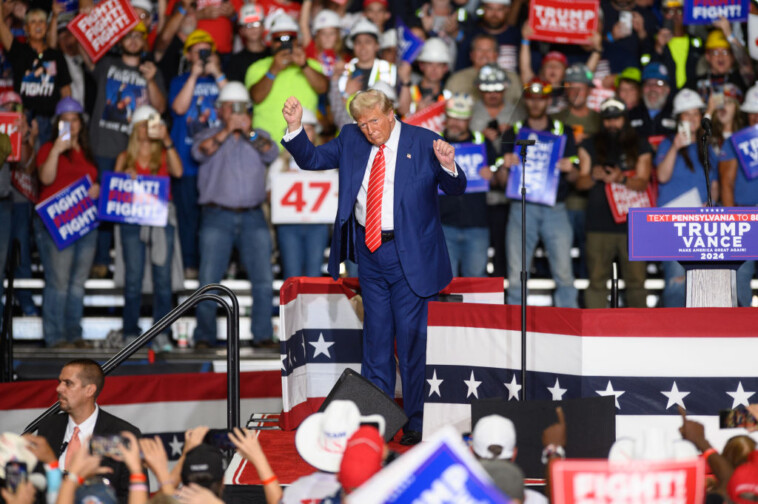The following is an edited transcript of an interview between Daily Wire Editor-in-Chief John Bickley and Heritage Foundation Research Fellow EJ Antoni on a Saturday Edition of Morning Wire.
Donald Trump has promised to impose huge tariffs on Chinese imports and American companies who move their production outside the country – while Kamala Harris has declared tariffs a tax on the middle class. We sat down with an economist about the true impact of tariffs on the economy and inflation and which approach will best help Americans.
* * *
JOHN: Joining us now is EJ Antoni, research fellow at Heritage Foundation’s Center for the Federal Budget. EJ, thanks for coming on.
EJ: My pleasure.
JOHN: Can we start at the beginning for the non-economists out there who are not familiar with some of the terminology? What are tariffs and how do they work?
EJ: A tariff is essentially just a tax on trade, specifically international trade. The way it works is that an importer has to pay a tax, at least directly. Now, that doesn’t mean the importer ultimately is the one who pays the final tax. What I mean by that is, the importer can simply increase the price at which he or she sells his or her product to the American consumer, in which case the tax incidents — or in other words who ultimately pays the final tax — would not be the importer but would actually be the American consumer. But I think it’s important to remember that, again, this is just a tax on trade, in this case international trade. It functions exactly the same way as the income tax or the sales tax does domestically.
JOHN: And the expectation for most imports and exports is that there’s going to be some sort of tariff imposed. Is that correct?
EJ: Yes, that’s correct. There are a lot of both tariffs and what we would call “non-tariff barriers” on the international stage today. One of the things that happened in the Trump administration, there was a lot of talk about increase in tariffs, but there was not a lot of attention paid to all of the decreases in tariffs that were also accomplished. This is what I think the former president means when he talks about both free and fair tariffs, fair trade. Using tariffs essentially as a weapon and negotiating tactic, if you will, to get a level playing field for American producers abroad.
JOHN: Speaking of the Trump-era tariffs, what items did the Trump administration target and did their tariffs work?
EJ: Well, one of the things they targeted was Chinese steel, and there actually was a very positive impact for that. Although there was a small increase in the price that American consumers and American businesses had to pay for those steel imports, about 80% of the tariff actually just got eaten by the Chinese producers. In other words, the Chinese producers were not able to pass along the full freight of that tariff to consumers in the American market, whether that was individual consumers or businesses. The reason for that is because there were too many alternatives both produced domestically, but also produced in countries like Sweden, where the price was nearly the same. And so if the Chinese exporter were to, again, increase their selling price by the full cost of the tariff, then it would have been prohibitively expensive. Everyone would have just bought domestically or bought from producers in other countries, like Sweden. So the result of that was essentially a countering of the subsidies which the Chinese steel industry receives from the Chinese Communist Party. Ironically, you ended up having Chinese taxpayers paying for that subsidy, and then the steel company paying the tariff to the U.S. Treasury. So in a very roundabout way, Chinese taxpayers were paying the U.S. Treasury.

A container ship leaves its berth with a full load of containers at the Qianwan Container terminal of Qingdao Port in Qingdao, China, on September 15, 2024. (Photo by Costfoto/NurPhoto via Getty Images)
JOHN: So that was an example of an extremely successful tariff approach. The Biden administration has left many of these tariffs in place, yet they continue to criticize Trump and his economic policy. How do Biden and Harris reconcile that?
EJ: This is a great question. I don’t think you can square that circle. They have been in power now for almost four years. They have had countless opportunities to reverse so many of the economic policies of President Trump, some of which they have, but regarding tariffs they haven’t – and it’s completely unclear as to why. Again, this has been at their fingertips available for them to do at any time and yet they have left all of these tariffs in place possibly because they have actually been very, very successful, despite the rhetoric on the Left.
JOHN: On the campaign trail, Trump has proposed tariffs as high as 60% on imports from China, 10 to 20% on global imports, generally. Are these good ideas – and why, as The Atlantic has highlighted, is the legacy media “mocking” those proposals?
EJ: Well, the same legacy media that is mocking the proposals of President Trump also told us that we weren’t going to have any inflation when Joe Biden and Kamala Harris started spending, borrowing, and printing trillions upon trillions of dollars we didn’t have. This is also the same legacy media that, when Trump was first inaugurated in 2017, told us it was going to cause a stock market collapse, economic calamities, etc. So, they have been wrong time after time. I frankly don’t know why anyone would listen to anything they say. If anything you’re better off just assuming the opposite of whatever they’re telling you. But that aside, there’s no reason to believe that any of the tariff strategies that Trump would pursue in a second term would cause any of these deleterious effects. One of the things to remember is that Trump uses tariffs as a weapon. This is tactical bombing, not strategic bombing. This is not the Smoot-Hawley Tariff Act of 1930, for example, where we essentially carpet bombed international trade by imposing wildly high tariffs in the name of protecting American industry. Protectionism, when it comes to tariffs, always ends very, very poorly. But if you’re using tariffs to raise government revenue, as we did for all of our nation’s history before the income tax was put in place, if you’re using tariffs as a negotiating tool, those are conditions that, again, have proven to be very, very successful when you look at the historical record. And Trump has been perhaps the most successful when it comes to using them as a negotiating tool.
JOHN: A lot of the trade discussion revolves around China, for good reason. They’re the world’s largest exporter, a massive economic power. Where does the U.S.-China trade deficit stand today?
EJ: It is still in the hundreds of billions of dollars, but one of the interesting things that has happened in the wake of COVID has been an acceleration of the decoupling of the United States and China. So, we seem to be at a turning point. If you want to take us all the way back to Richard Nixon when he went to China and both nations opened up each other’s markets to one another and we thought that that was going to moderate China. Ironically, it ended up moderating us — we have become less free as opposed to them becoming more free. But it seems like we, again, are at a decoupling, a cusp, a change in the winds if you will here, where we are increasing trade with other partners, whether that’s Canada and Mexico, or even one’s future partners further abroad, like India, for example, whose manufacturing sector is growing faster than any other in the entire world. So, as we develop deeper ties to these other trading partners, not only is international trade overall with China declining, but our trade deficit with them should also diminish over time.
JOHN: We saw an NBC News report that said the trade deficit with China is actually the lowest since 2010. They actually credited Trump’s tariffs for that. So did his tariffs actually improve the trade deficit some?
EJ: I think so, again, because one of the things that it did is, any of those instances where Chinese manufacturers were not willing to eat most of the cost of the tariff – in other words, pay it themselves – when the manufacturers tried to pass the full freight on to the American consumer, the American consumer chose alternatives. And some of those alternatives were making those products domestically. And so, again, it’s not simply a matter of all of these costs are guaranteed to be passed along to consumers, which is one of the things that the legacy media is asserting today. But that simply is not true. It’s not true theoretically, and it’s not true either empirically when you look at the historical record.
JOHN: The Biden administration, we mentioned, has been critical of Trump’s tariffs while maintaining a lot of them – and actually imposing some new ones. $18 billion worth of tariffs on Chinese goods went into effect last Friday. What products were affected by these Biden administration tariffs?
EJ: Well, unfortunately, this really focused on much of the green energy agenda, if you will, and, and different products and subcomponents related to that agenda. And the reason that’s problematic is twofold: Number one, it frankly is a silly agenda. It’s not economically viable. You’re talking about energy sources that are literally net losers. In other words, over the lifetime of something like a solar panel or a windmill, you will put more energy into the thing than you will ever get out, especially once you consider the opportunity costs involved. But the other problem is that very oftentimes you are looking at things where China has a near monopoly. And so this will be exactly the opposite of the effects we saw under Trump, where the American consumer had alternatives. And so now what you’re going to do is you’re going to see the full freight actually passed on to the American consumer. Now, it’ll be dispersed across a great many products and a great many industries. So it’s not as if you’ll see something like the cost of a solar panel for your roof go up by 200%. But, again, you will see cost increases from that. And you can argue that this is still a kind of tactical as opposed to strategic bombing. But ironically, you’re tactically bombing your own warehouses instead of the enemy’s.
JOHN: So it will effectively drive up the costs of green energy, if I’m hearing that correctly.
EJ: Yes, I think that’s very fair to say. And, again, it goes back to this idea that the American consumer, and American businesses also – because some of these things are intermediate goods, not final goods – but Americans, whether it’s businesses or consumers, do not have as many alternatives frequently for these types of inputs as they would have four or five years ago when the Trump tariffs were put in place. It frankly is just a very good example of the tactic being applied poorly.
LISTEN: Catch the full interview with EJ Antoni on the Saturday Edition on Morning Wire
JOHN: Now, you mentioned protectionist policies. There’s something else going on here with Trump’s proposals – trying to keep manufacturing in the U.S. He said he would impose a hefty tariff on John Deere if they moved production out of the country. We’ve seen this also with some automakers. Can you explain how that kind of strategic tariff works related to US manufacturing? Is it something that can be effective?
EJ: It depends. Very often times it can be effective, but that doesn’t mean it’s the right thing to do. In other words, you might have better options out there. You know, because what you’re essentially saying to the business is, instead of your three options being produce it here and make less money; produce it abroad and make more money; or shut down, you’re essentially making one of those three completely unviable. And so now the only two options are shut down or make it here but make less money. That’s going to cause a flight from shareholders, it’ll cause a flight of investment capital, and it can cause a lot of problems for that business. It can even result in fewer people being employed and less products being made. So a much better alternative in that type of instance would be to say, why is it that manufacturers can’t produce here and can’t produce here viably? Now, sometimes it is because we tend to tax things domestically at a higher rate than we tax the imports. This is the whole drive behind what’s called a “border adjustment tax.” It aims to essentially cancel that out and give American producers more freedom, a level playing field against their foreign counterparts. However, another big problem is the regulatory burden that American manufacturers face here at home that you don’t see abroad. This amounts to literally tens of thousands of dollars per worker. In fact, if you have a manufacturing employee who’s making $50,000, the regulatory burden on the employer can be another $50,000. So, what looks like a $50,000 employee is actually a $100,000 employee in the eyes of the employer. So all that to say, the American worker needs to be more than twice as productive as his or her foreign counterpart, assuming that foreign counterpart is getting paid the same amount, in order to be competitive. Now, if their foreign counterpart is getting paid less, then the American worker needs to be even that much more productive, and therefore competitive, in order to keep his or her job. So, we don’t want to understate just how bad the regulatory burden is on American manufacturing, and just how much capital flight out of this country that has caused.
JOHN: Final question. Last weekend, U. S. Trade Representative Katherine Tai talked about tariffs as a useful tool that helps the middle class and empowers the working class. Do you believe that’s ultimately a fair framing of the potential impact of tariffs?
EJ: Well, I think the biggest thing to remember here is the fact that tariffs are just a tax on international trade. They function exactly the same as taxes on domestic trade, like a sales tax, like an income tax. And what you really want at the end of the day, if you’re going to tax transactions, is you want to tax all transactions exactly the same, because otherwise, you’ll introduce economic inefficiencies, because you inadvertently will end up favoring certain types of transactions as opposed to others. So, if we had a world where there were no tariffs and the only thing we taxed was domestic trade, you would actually be encouraging trade and production to move abroad because it would be cheaper, all else being equal, to import things, as opposed to making them here at home. And so, if you can get into a situation where, through tariffs, you now have the same taxes on imports that you do on domestic production, again, you have leveled that playing field, and you allow American businesses and American workers to compete. One of the things that has really gutted the American middle class over the last several decades, and one of the things that has really helped drive manufacturing overseas, has been this push to reduce taxes on inputs while increasing taxes on the things that are still made at home. Look, if you tax something more, you get less of it and if you tax something less, you’ll get more of it. That’s just Econ 101. And so as we have taxed imports less, but taxed domestic production more, we have seen that violent swing in production, and we have seen that manufacturing flight accelerate out of the United States.

Cargo ship loaded in New York container terminal at night viewed from Elizabeth NJ across Elizabethport reach. Ultima_Gaina. Getty Images.
JOHN: Has the Biden administration made that worse or lessened that domestic burden?
EJ: Well, I think with legislation like the Inflation Reduction Act – which was a complete misnomer, by the way – but that aside, I think legislation like that has actually helped to make the situation worse because it has introduced not only new taxes, but also new regulation on different types of energy production here at home, while not imposing the same kinds of taxes and regulations on that produced abroad. And also not simply energy, but also a lot of products that Americans use every single day. You think of a home appliance, whether it’s a refrigerator, a clothes washer, or a dishwasher, again, you name a home appliance and I can pretty much guarantee you that this administration has imposed new regulations on it. One of the problems is that these are not simply regulations in terms of how much water or electricity or natural gas these appliances can use, it also has to do with regulations regarding their production. But those are regulations that only apply to production here at home. You can make the exact same thing abroad in a much less environmentally friendly way or in a much less labor friendly way, and it will not have to meet those same stringent standards. And so, again, you have simply encouraged production to leave this country and to go overseas, and when that production leaves, the jobs and the incomes go with it.
JOHN: Well, we can’t afford prices going up any more or any more jobs lost. EJ, thank you so much for joining us.
EJ: Thank you so much. My pleasure.
JOHN: That was EJ Antoni, research fellow at Heritage Foundation’s Center for the Federal Budget.
***


